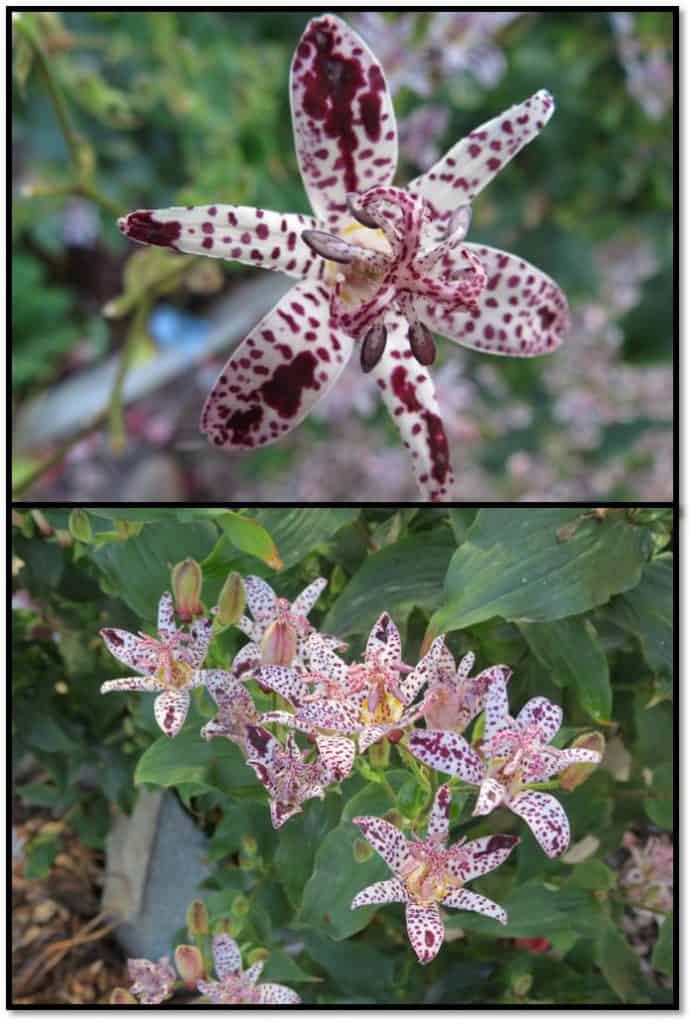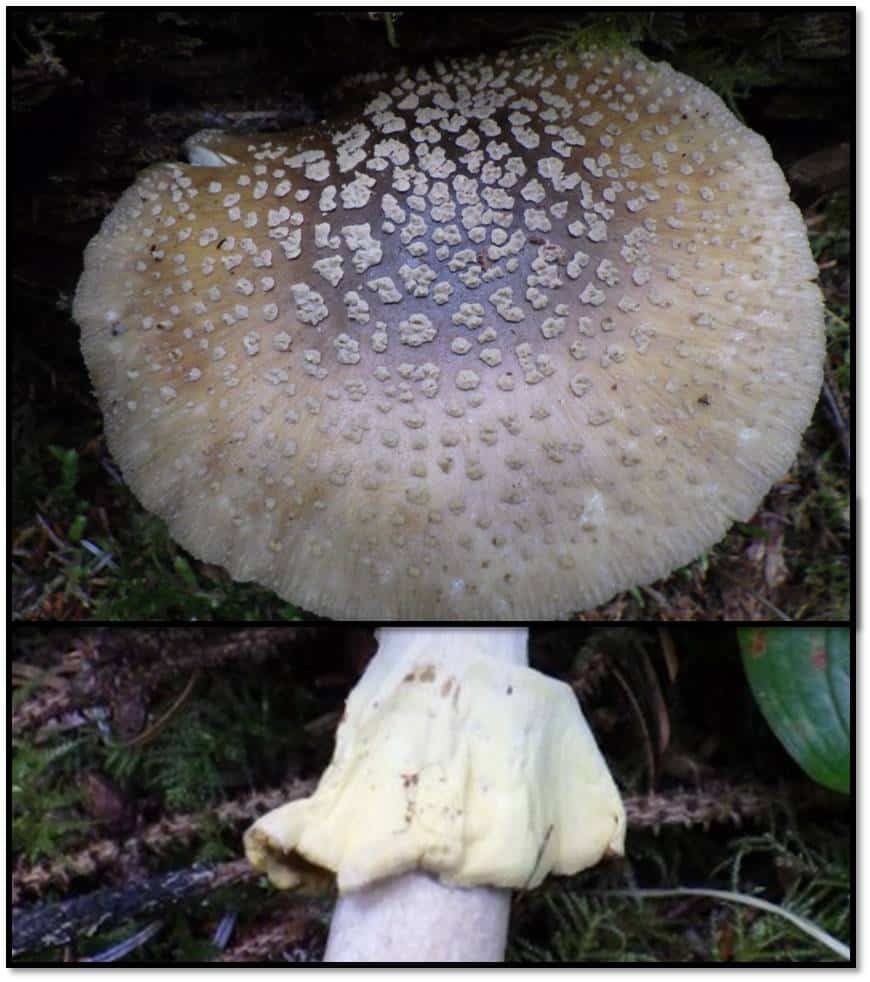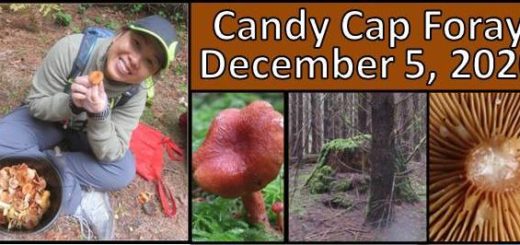Tacos, Toad Lilly, and Mushrooms

The title of this article might seem somewhat confusing as some readers try to figure out which mushroom is symbiotic with a taco. Certainly most flowering plants have fungal partners, but tacos? Well there is a fungal relationship here but more of a culinary one. Last month as I was experimenting with creating my spicy lobster chips I couldn’t help but think about tacos. Truthfully, I often think about tacos as they are such a feel-good food. However, being vegetarian we use nonmeat substitutes and beans just don’t get the job done. This being the onset of mushroom season it only made sense to use them for something exciting like tacos.

Basically, Sandy and I went out and found enough chanterelles to sauté up with garlic, parsley, chili seasoning, and a dash of Trader Joe’s Chili/Onion Crunch to create a very tasty southwestern style ingredient for our tacos. This was accompanied by sliced avocado, sliced tomatoes, sharp and pepper jack cheeses, and diced cabbage in place of lettuce. I like to melt some cheese inside the taco shells while heating them up in the oven. I’ve found that placing the shells in the oven, turning it on at a setting of 350, then pulling them out just when it reaches that temperature works great for melting the cheese and heating the taco shells. My taco layering technique starts with seasoned mushrooms topped with more cheese, a little salsa, avocado, diced cabbage and finally sliced tomatoes. I like using tomato slices rather than dicing them as it helps keep other ingredients from falling out. Well, there you have it, spicy chanterelle tacos for your eating enjoyment. By the way, this recipe also works for Carnivores, Pescatarians, Flexitarians, Vegetarians, and Vegans when using a cheese substitute.

In the flower category, I feel compelled to give a brief shout out to one of my favorite late blooming plants, commonly called the Toad Lily. This lily is in the genus Tricyrtis and its flowers now come in several colors. It really enjoys a shady spot in the garden and will slowly expand via rhizomes but is not invasive. When it starts to flower it becomes a real 4th of July moment. Flowers exploding all over each stem producing zillions of these amazing looking blooms that continue until a hard freeze ends the show.

And now for mushrooms, which should actually be popping up in great abundance with all of our cooler and rainier weather – NOT! When I wrote last month’s article it was on a weekend that was hot, dry, and smoky. Page forward a month and I am writing this article on a hot, dry, and smoky weekend. No one seems to know how long this weather pattern will continue but based on prior years with hot and dry fall weather patterns, it’s certainly not good for mushroom fruiting. That said, you can still find mushrooms out there, you just need to be more selective as to where you look and patience is a must. For now, coastal and higher elevation areas are what I would call timidly active as many species of mushrooms are taking a wait and see attitude. Besides our classic edibles, one mushroom that I’m seeing quite frequently is Amanita augusta, which you will see listed in older books as Amanita aspera or Amanita Franchetti. I am not fond of all these name changes; however, the new species name augusta means “majestic” and perfectly describes the looks of this particular mushroom. The ones we typically find have a dark cap with tan colored remnants or warts, yellow skirt (annulus) and stem, and ring like structures at the stem base which can fade away as it ages. The one pictured to the right depicts a young augusta in all its glory that was popping up at the coast under Sitka Spruce.

What this mushroom lacks in overall size compared to some of its larger Amanita relatives, it certainly makes up for in sheer attractiveness. Once this mushroom is fully developed, the cap takes on a color transition from a darker center to a progressively lighter color as it extends toward the cap’s margin. The cap’s remnants, left over from the universal veil, also start to fade in color, size, and density from the center to its margin. Additionally, the stem ring or skirt will be a bright yellow color when the mushroom is fresh and then starts to fade as it ages. In our neck of the woods, we typically find this amazing mushroom growing amongst Sitka spruce and Douglas fir trees.
Mostly listed as being poisonous, David Arora has been testing that status by eating this mushroom and serving it to friends and people who take his classes and workshops. David states that cooking Amanita augusta “very well” is strongly recommended as it may contain hemolytic toxins which destroy red blood cells. Comments as to its flavor would indicate that this mushroom’s attractiveness is overwhelmingly more delightful than its culinary value. When phrases like “tastes like cardboard” are used, that doesn’t entice me to risk the health of my red blood cells just for a chance to add another mushroom to the list I’ve tried. In my humble opinion, stick with our tried-and-true list of edibles and leave chance to Gamblers and Bull Riders.
Let’s all hope for some significant rain to clear our skies of smoke, get mushrooms energized, and make mushroom hunting great again. See you at the Mount Pisgah Arboretum Mushroom Festival on the 30th.





